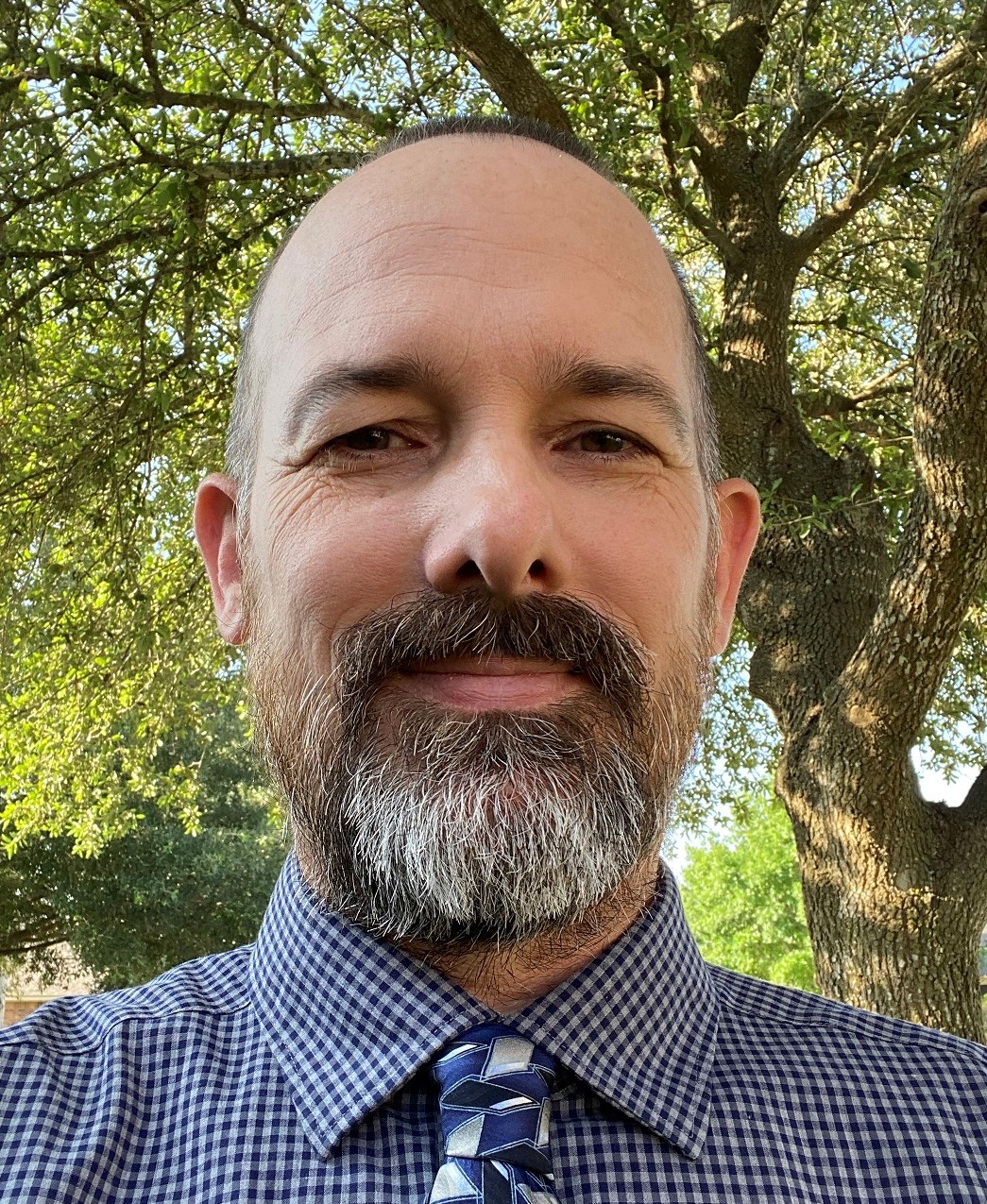
Michael Chamberlain
Director of Data Management
TxDOT - TPP
Personal email: mchamb12@gmail.com
Short Biography
Michael Chamberlain is the Director of Data Management within TxDOT's Transportation Planning and Programming Division and has been with TxDOT for 25 years. His experience includes the creation of numerous GIS productivity tools, statewide datasets, and applications including the Statewide Planning Map, Project Tracker, and the Geospatial Roadway Inventory Database (GRID). Current projects include developing the Alternative Fuel Corridors, the National Electric Vehicle Infrastructure Plan and managing the statewide rollout of EV charging.Served as a Cavalry Scout for the Texas Army National Guard with the 124th Cavalry Regiment in Waco, TX. Graduated from the University of Texas at Austin with a BA in Geography 1999. Lives in Pflugerville, Texas with his wife Jessica, daughter Makayla, and son Andrew. Passionate about electric cars, making electric cars, driving electric cars, robotics, programming, baseball, and space.
Longer Biography
I was not the best student in middle and high school. Extracurricular activities were more interesting and I found myself heavily involved in student government the last couple years of high school and pitching for the varsity baseball team. I loved playing baseball and as a lefty with control of 3 pitches was fortunate to play at a higher level early. Academics became secondary and it showed in my grades. But I injured my throwing arm playing football and had surgery my Junior year.Coming back for my senior year, I expected to join the pitching rotation but it didn't work out that way. I played left field and tried to get ready for pitching but it became clear my coach had no intention of letting me pitch again. Looking back I understand they didn't want to risk further injury. But there was one tournament when we ran out of pitchers. Coach looked at me and said "you want to pitch"?
You will have many memorable moments playing baseball; first hit, big win, striking out, amazing plays, and good times with your friends. This was one of my best, pitched all but the last couple outs in an amazing loss that I will never forget. My mom was teary-eyed in the stands seeing her son pitch one last time. I would relive that experience from the other side of the fence later in life as I watched my son pitch his last inning following similar circumstances.
With my stellar grades I didn't bother applying to big name schools like many of my peers. And mistakenly, I didn't pursue baseball after high school. I talked myself out of it, thinking the surgery would be a limiting factor (it wasn't). I told myself I would never make that type of mistake again. It is better to try and fail or be rejected than never try.
My first semester at Austin Community College was uneventful. I was actually a little bored, involved in everything in high school and transitioning to a student exclusively felt weird. So, I decided to join the Army Reserve. College would work my mind and the Army would work my body. There were other benefits like continuing the tradition of service in my family (father Marines, grandfather Army), patriotism, the challenge of being able to make it, and financial assistance for school.
My shoulder surgery created a little difficulty getting clearance to join. Eventually, the third specialist they sent me to asked if I could do 5 push ups. I demonstrated, he signed and I was off to join the Army in what would have been my second semester of college. Looking back, 5 push ups was not a relevant measure of physical difficulty for the type of activity recruits are "asked" to perform on a daily basis.
Here's the thing about being in the Army that I did not understand at the time. Half of your training day is spent in the classroom learning how to be a good soldier. You practice dozens or in some cases hundreds of times before you attempt physically challenging or dangerous activities. The habits you learn in the Army are directly applicable to success at home. Be on time, sit in the front row, take clear notes, ask questions, practice, practice, practice. Failure does not mean forever, get up and try again, your buddies need you. Push yourself until you can't go any further then go a little more. At the end of the day have no regets, you did everything possible to make it happen.
My regular Army training was over in 8 months and I was back in time to start the fall semester of my second year. Things were different and it was noticeable. I went to the student advising center and started asking the right questions. In a few minutes I found the list of classes needed to transfer to UT Austin, picked a path and followed it to the letter. The advising center wasn't a secret and hadn't changed but I changed. After a few more semesters and getting good grades for first time in my academic career, I applied and was accepted to UT Austin.
First order of business after transferring 65 hours from ACC was picking a major. I thoroughly enjoyed Geology classes at ACC but didn't have enough math classes for that college and didn't want to take extra classes. After reviewing all viable offerings from various colleges in the UT advising office, I found the Geography program in the College of Liberal Arts. Mapping and cartography seemed complimentary to what I was doing in the Army and remote sensing and GIS sounded interesting. As a bonus I could take a few Geology classes to satisfy requirements in the Geography track. It was a perfect fit so that's what I did.
Turns out Geography was a great fit. I would learn in the classroom and apply/test what I learned in the field during the next drill weekend. Most classes overlapped on topics which made the whole process a little easier to manage. And since I lived off campus, I would schedule classes back to back on as few days as possible. The result was an efficient schedule that was sometimes comedic. One class ends, everyone leaves but I stay because my next class started in the same room a few minutes later. I took 24 hours in room GRG 424 alone. The classes were small, the professors were great and the learning environment was perfect.
Education
I value my time at Austin Community the most. It was because of Scott Gainer, he taught Geology/Oceanography and believed you learned more by getting out of the classroom and experiencing the world. Each class he taught had at least 3 field trips to various parts of Texas. Mustang Island, Enchanted Rock, and Big Bend were common trips with stops at every road cut between Austin and the destination. Every moment was teachable and it was the best educational experience of my life. I miss you Scott, thank you.- Clarkston Elementary School - Tyler, TX
- Moore Middle School - Tyler, TX
- Westview Middle School - Austin, TX (Pflugerville ISD)
- Pflugerville High School - Pflugerville, TX
- Austin Community College - Austin, TX
- BA, Geography - The University of Texas at Austin
Work History
Army Training- Basic Training - Fort Knox, Kentucky
- Advanced Individual Training - Fort Huachuca, Arizona
Army Jobs
- Ground Surveillance Radar Operator - 96R
- Intelligence Analyst - 96B
- Cavalry Scout - 19D (Bradley Driver, Gunner, then Commander)
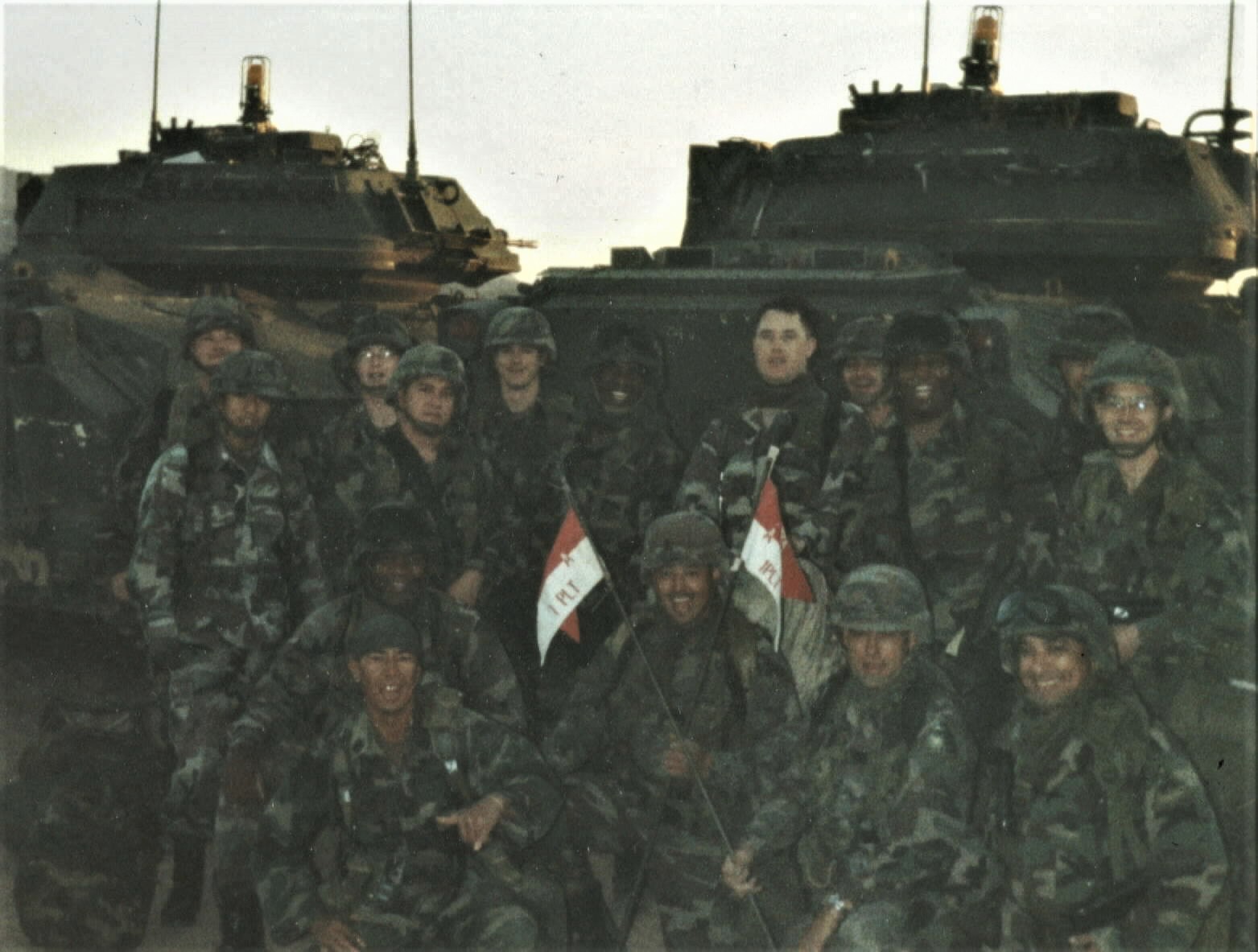
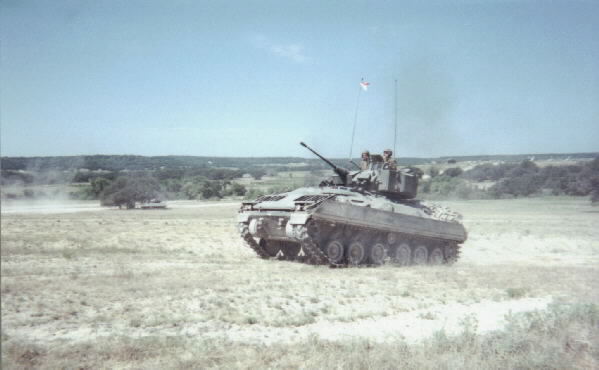
TxDOT Jobs
- Travel Demand Modeler
- Traffic Analysis Support Lead
- GIS Developer
- Mapping Branch Manager
- Director of Data Management
Notable Projects
Statewide Plans- National Electric Vehicle Infrastructure Plan - This plan is the blueprint for deploying high power electric vehicle charging infrastructure across Texas
- Texas Electric Vehicle Implementation Plan - The deployment plan outlines how to deploy electric vehicle charging infrastructure. Program administration, state and federal requirements, identifying awardees, construction, collecting and reporting usage data, and reimbursement are all part of the deployment plan.
Full Concept, Design, & Implementation Tech Projects
- The Statewide Planning Map (SPM) - Standard web map of TxDOT with base maps, overlays, and geographic tools. SPM provides a common workspace to visual highways and associated data for planning purposes.
- Project Tracker (PT) - Web map to view planned highway projects in Texas, this included a first of its kind process to map all planned projects at one time. PT includes project details from 5 systems and makes it all available to the public.
- Traffic Count Scheduling - App used to schedule and manage traffic counts.
- Right of Way Crowd - Web map to crowd source the identification of the highway Right of Way footprint.
- Calculating Highway Curves from GIS linework - Utilize GIS linework to identify and quantify curves (degree of curvature, and curve class).
- Route Events and Print Map (RPM) - Dynamic web map using REST services to build a base map from geometry, add route events, and export results.
- County Mapbook - Automated the creation of a now retired paper based mapping process.
- Highway Asset Management System (HAMS) - Proof of concept application to replicate the functionality of GRID using only AGO rest services.
- JavaScript Framework - Library of common JavaScript functions to aid in the development of web projects.
- Functional Classification Update Tool (FCUT) - Web map to collect roadway classification updates from 25 MPO, TxDOT staff, and review by FHWA.
- Guardrail Inventory App - First statewide data collection of state owned guardrails using a smartphone and browser at highway speed.
Managed
- Geo-Spatial Roadway Inventory Database (GRID) - Enterprise roadway management system
- Detail coded Roadway Network for Texas - Base roadbed GIS layer of state owned roads in Texas
- All roads network (city streets, county roads, federal roads, state highways) - GIS layer for all roads in Texas
- Highway Performance Monitoring System (HPMS) - Annual report on highways in Texas
- GIS basemap data - City limits, County and District boundaries, MPO boundaries, Rivers and Streams, Parks, and Cemeteries
- Cartographic Map Products - Departmental Map, County Mapbooks, Control Section Maps, custom map products
Management
Being a manager/director for 18+ years, I've had the opportunity to interview over 400 individuals (some multiple times). It's a learning experience for me as much as the interviewee and I look forward to hearing about their accomplishments and unique ideas. Less than 40 were brought to the organization but they continue to do great things (making me proud along the way). When people ask what makes us successful, I tell them we bring smart capable people to the organization. I make sure they are trained, equipped, and motivated. The final step is giving them meaningful work and room to learn, lead, and grow.
Electric Cars
Project One - 1999At UT Austin I tried to join the solar race car team. They gave me the equivalent of a pat on the head saying "you are in liberal arts, maybe you can help us fund raise". I provided a few choice words to their offer and walked away. The next day I purchased a welder and materials from my local metal shop. The next few weeks were filled with reading (Build Your Own Electric Vehicle by Bob Brant) and ordering parts from eBay.
After much trial and error, fabrication and re-fabricaiton I learned how to create a functioning electric car. It was a single seat, 36 volt, mid motor design with three 12 volt deep cycle batteries. The drive axle was salvaged from a golf cart and I created a straight front axle with spindles and hubs from a go kart parts supplier. There were two hand stations, one for steering and brakes on the right with throttle on the left. It was supported by leaf springs all around with a manual forward-reverse switch below the throttle. The prototype had more power than brakes which led to entertaining test drives, it was equal parts amazing and terrifying.
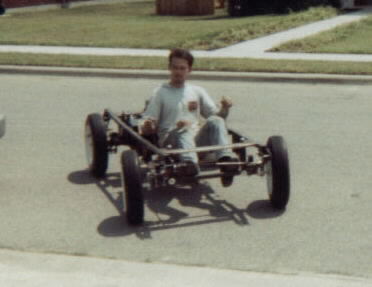
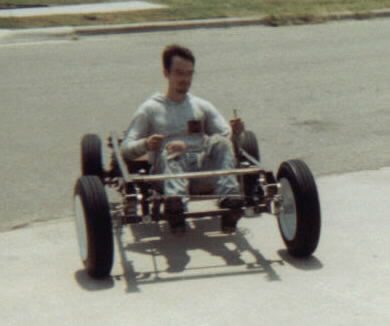
Tercel - 2005
In 2005 I was ready to try a full size vehicle gas to electric conversion but I had some reservations. My wife provided the last bit of encouragement saying "why don't you just build one"? She was right, it was time to take the leap so I started looking for a donor vehicle and found a 1992 Tercel that would do the job.
For an electric vehicle conversion from a gasoline powered vehicle you need a car with a standard transmission. You will keep the transmission in place and create an adaptor plate, spacer, and hub to join the output shaft from the electric motor to the transmission. I went for a clutchless design that utilized the hub of the existing clutch disc (it has splines that match the transmission shaft). A local machine shop created the parts and I provided the measurements and drawings.
I decided to go with a DC motor again but this time rated at 72-120 volts. I experimented with various battery configurations and voltages but settled on thirteen 6 volt deep cycle batteries for a system voltage of 78. Storing 13 large batteries in a small Tercel was not an easy task. I built a box to store 8 batteries in the trunk and the remainder were stored in the engine compartment.
The entire process took a few months and was filled with problems to solve and parts to adapt based on vehicle design decision that were made for the now replaced gasoline engine. After all the parts were made and the systems were wired and tested (120 volts initially) it was time for the first drive. I cautiously drove down the street, everything went well so I pushed it a little harder. A short drive down a county road led to the frontage road of SH 130. Time for a high speed test (looking back, I would not recommend doing this on the first drive). The thing about electric cars is that you get the same torque at 1 rpm or 1,000 rpm. Acceleration was effortless and I was far down the road before realizing my speed. Overall, it was a good drive and I would repeat the process over the next month with gradually longer trips to verify range.
Over the next 4 years I would drive the car over 25K miles. Normal trips were 5-15 miles in length around town with long drives of 48 miles round trip when I drove the car to work. Charging was done at 120 volts and 15 amps at what's considered a Level I charge today. Eventually, my home built electric vehicle was replaced with a Gen I Nissan LEAF. Homebuilt EV conversion are fun, rewarding, and a lot of work. Factory built electric vehicles are 10x better and come with a warranty.
Jeep - 2018
During college I accumulated a few military jeeps (years 1942-1959). I enjoyed their simplicity, historic value, and driving experience. Due to their condition and tendency to rust, it could take 2 or 3 vehicles to make one reliable Jeep. I didn't try to make them historically accurate due to cost and parts availability but it was a fun hobby. After college, I sold off my remaining Jeeps and parts becuase I didn't have a place to store them any longer. The years went by, kids got older and one day my son asked why I didn't keep at least one Jeep? I responded "because your dad was in idiot". He was right, I should have kept one.
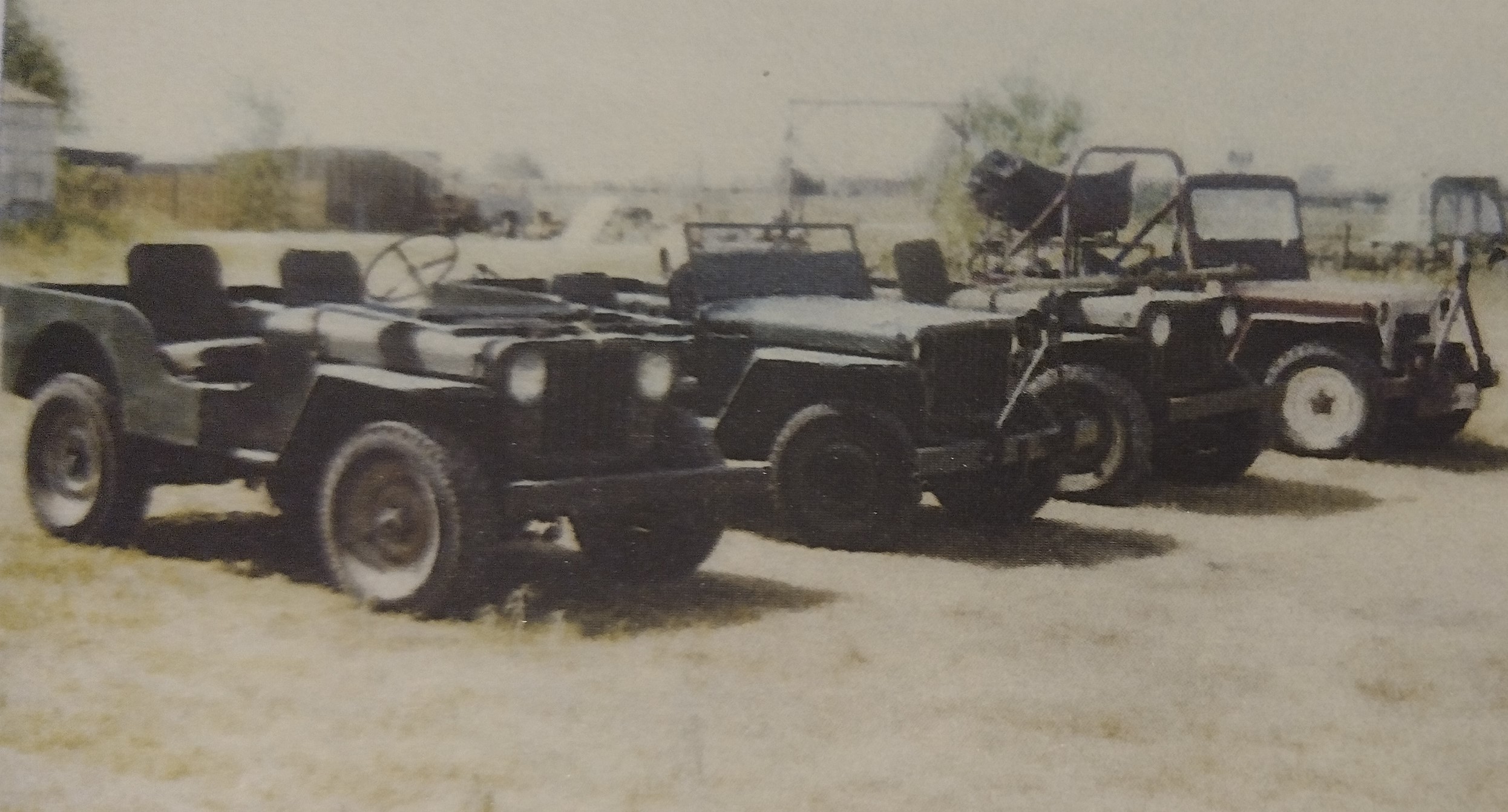
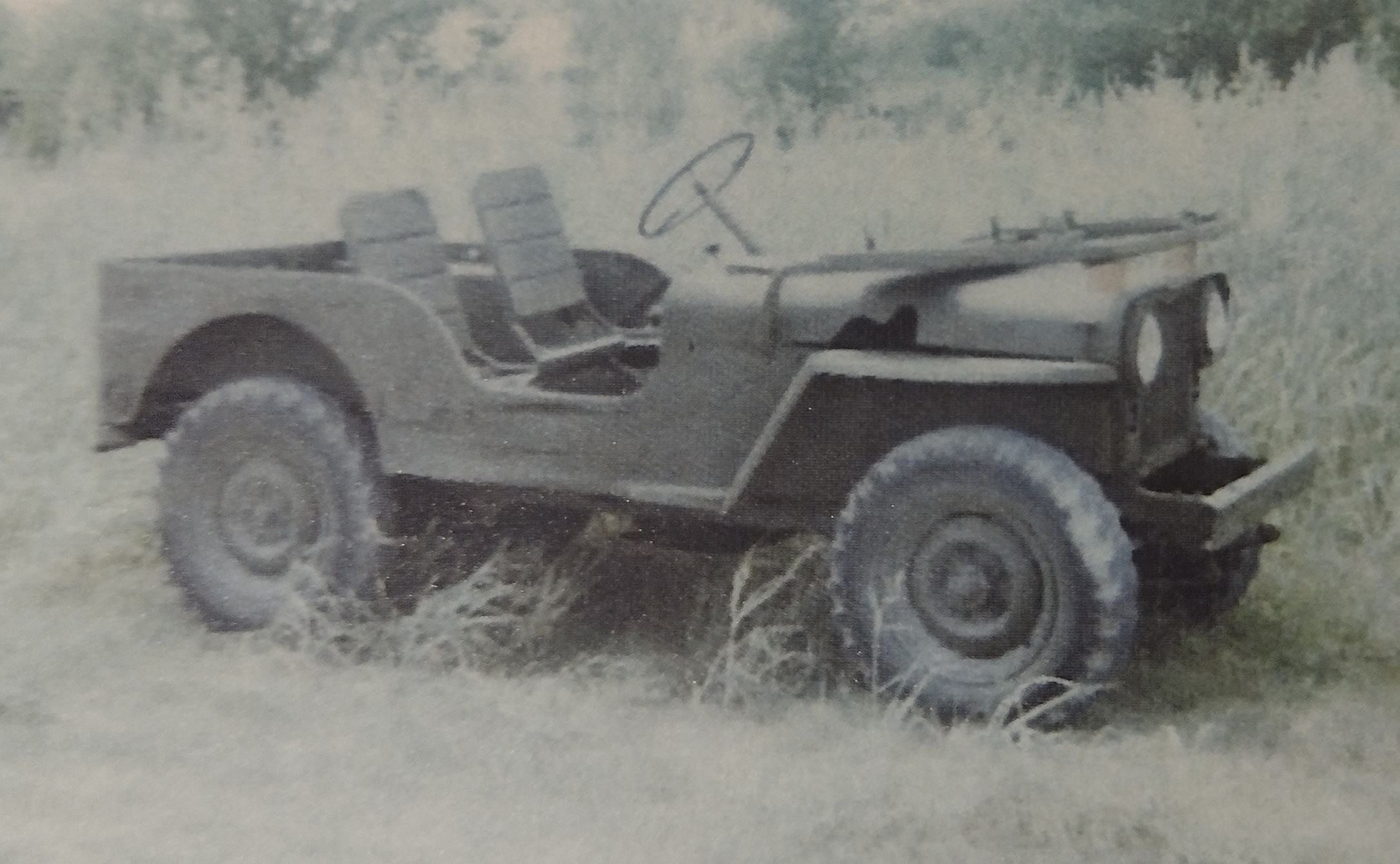
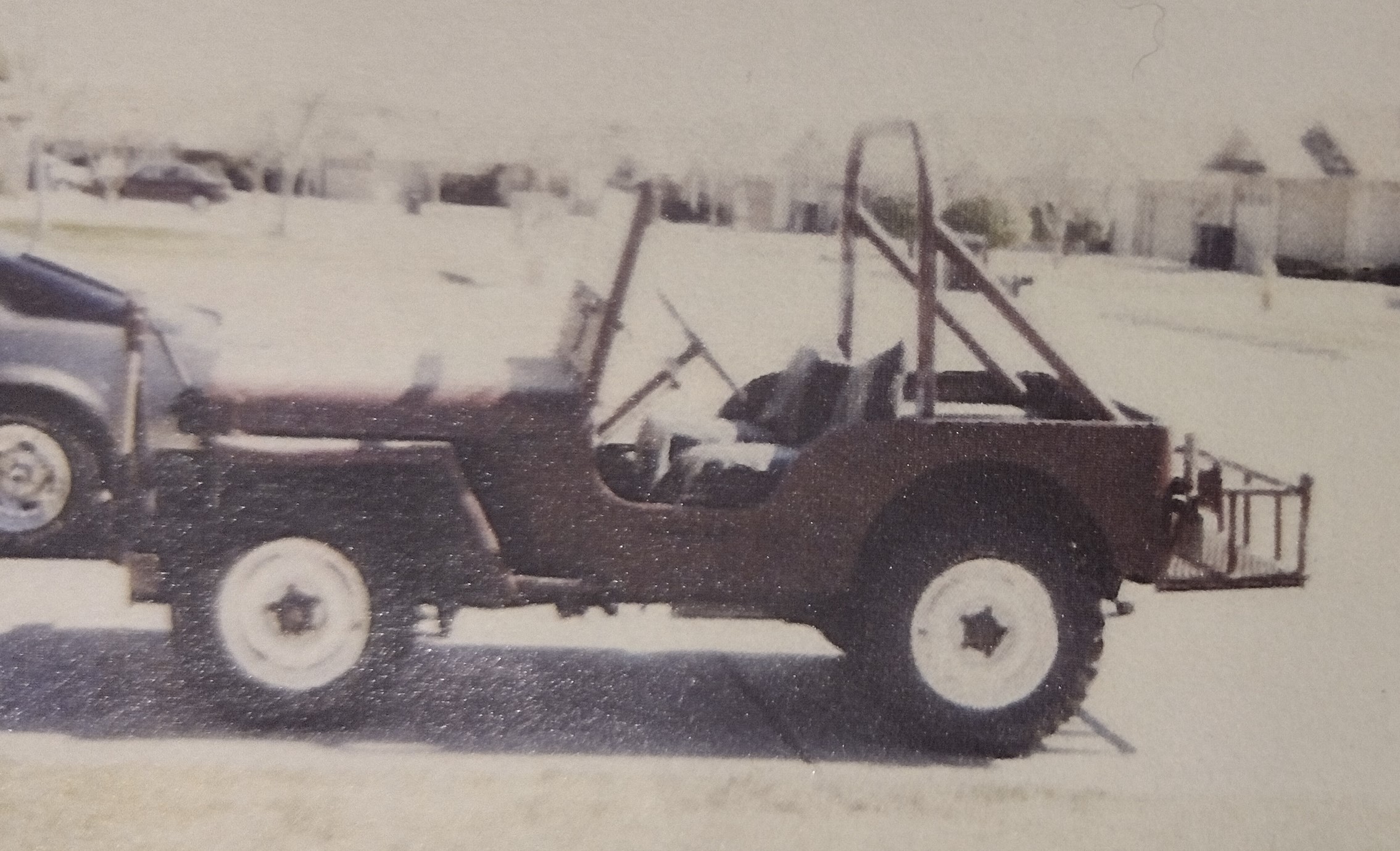
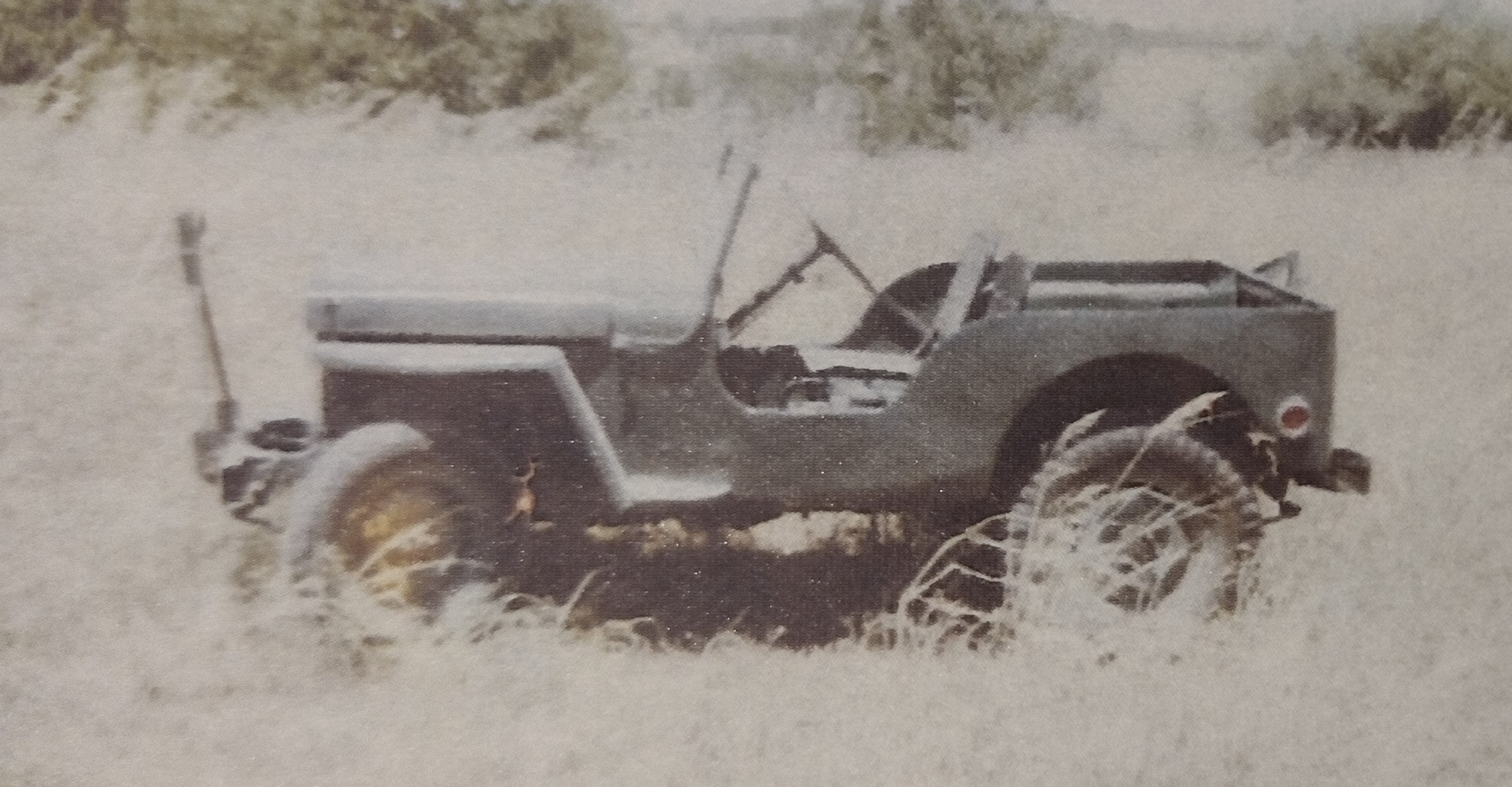
The next state holiday (one of the days where state employees are off but everybody else works) I decided that I was leaving and not coming back until I found a Jeep. The previous week I put together a list of targets and I set out to find my next project. I looked at a couple in the Austin area and one a little east of San Marcos but wasn't moved by any of them. Was heading north to the Waco area when a new listing popped up in Gladewater, TX. That one caught my attention because my family was from Gladewater so I gave them a call.
It was a short but consequential conversation. As we talked about the Jeep (1964 CJ-5 painted like an M38A1) and how he acquired it from another gentleman in Tennesse he spoke about his time in the Army. I mentioned that I served in the Army as a Cavalry Scout. Turned out he was a Cavalry Scout at one time in the Army too. Small world, but it gets better. He said "what is your name again"? Michael Chamberlain I replied, and he said "like Chamberlain gas company"? Yes, that was my grandfathers company a long time ago and you can still see trucks with that name around Gladewater. Small world indeed, after a few more minutes he agreed to wait for me to make it up there. It was exactly what I was looking for, didn't run but everything was in good shape. I had it picked up and delivered a week later, it would make a good first 4x4 EV conversion.
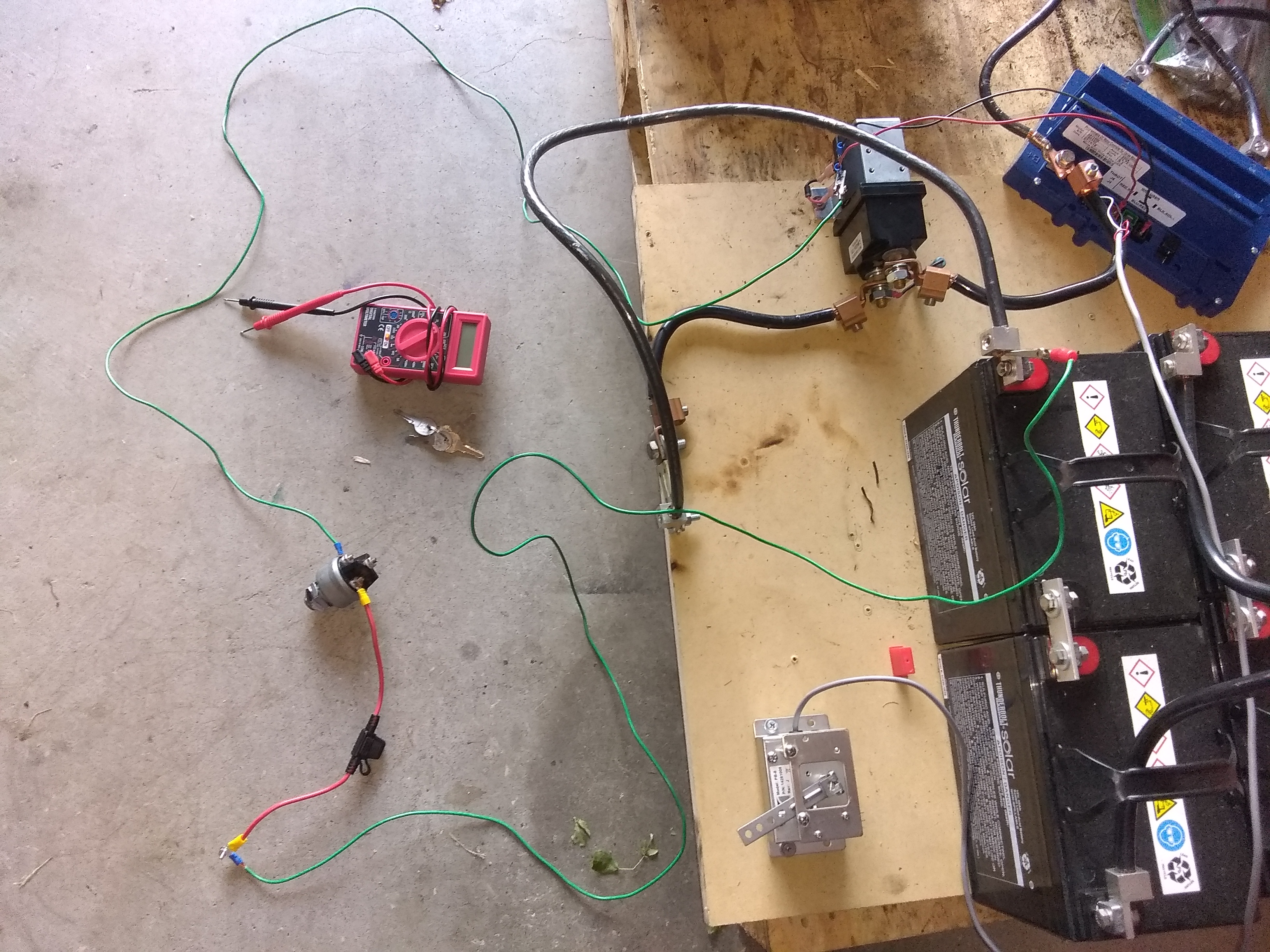
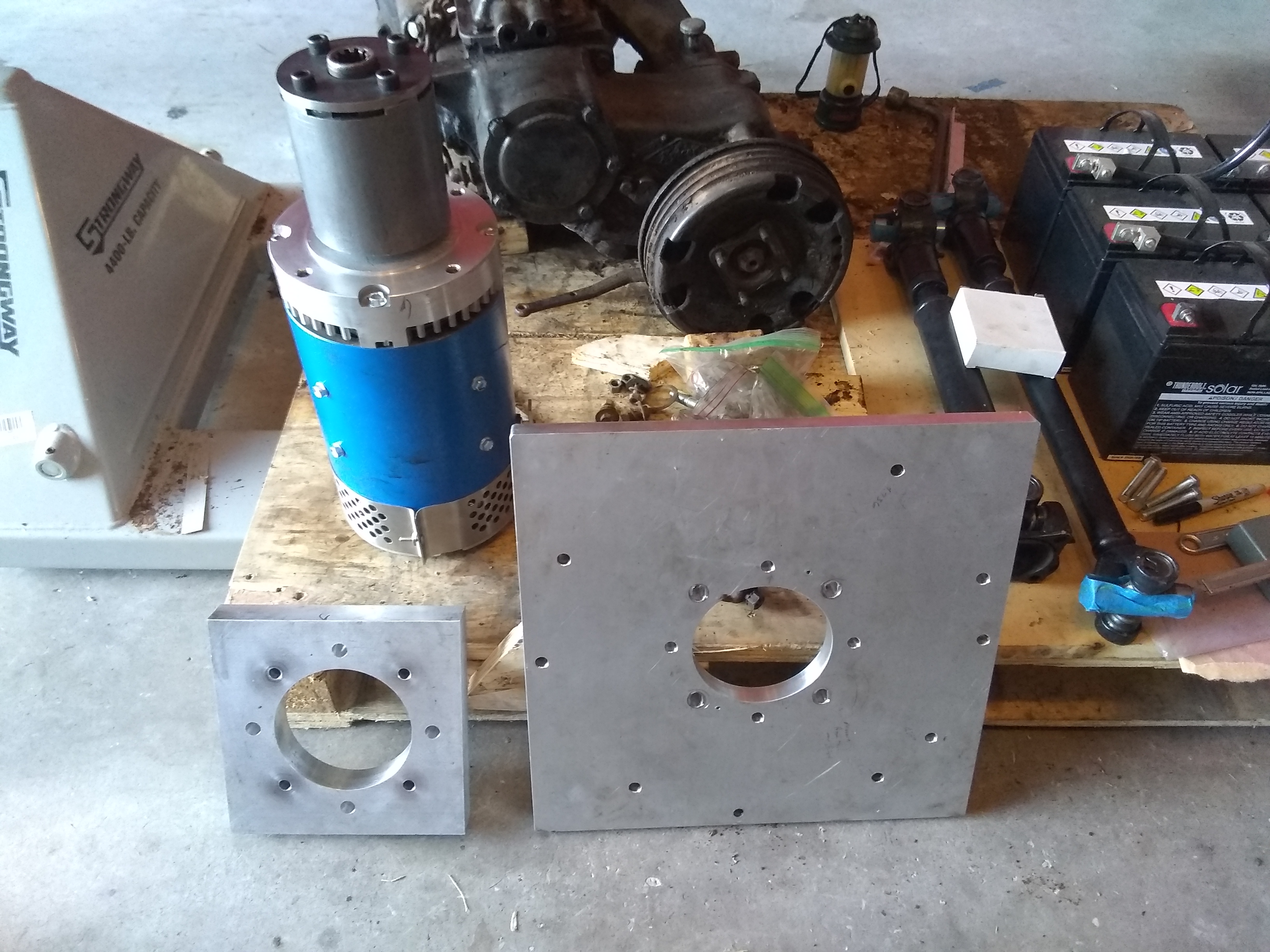
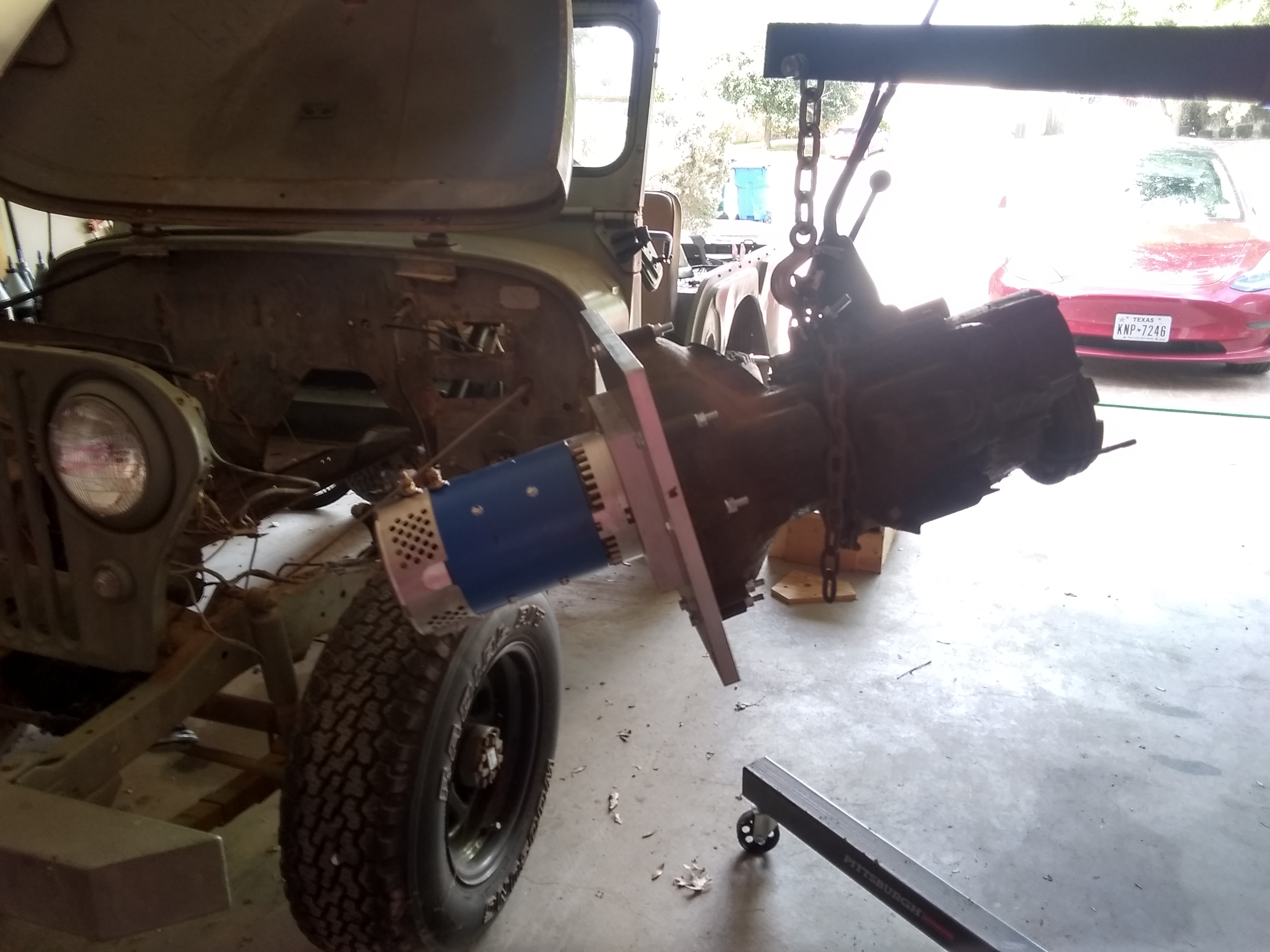
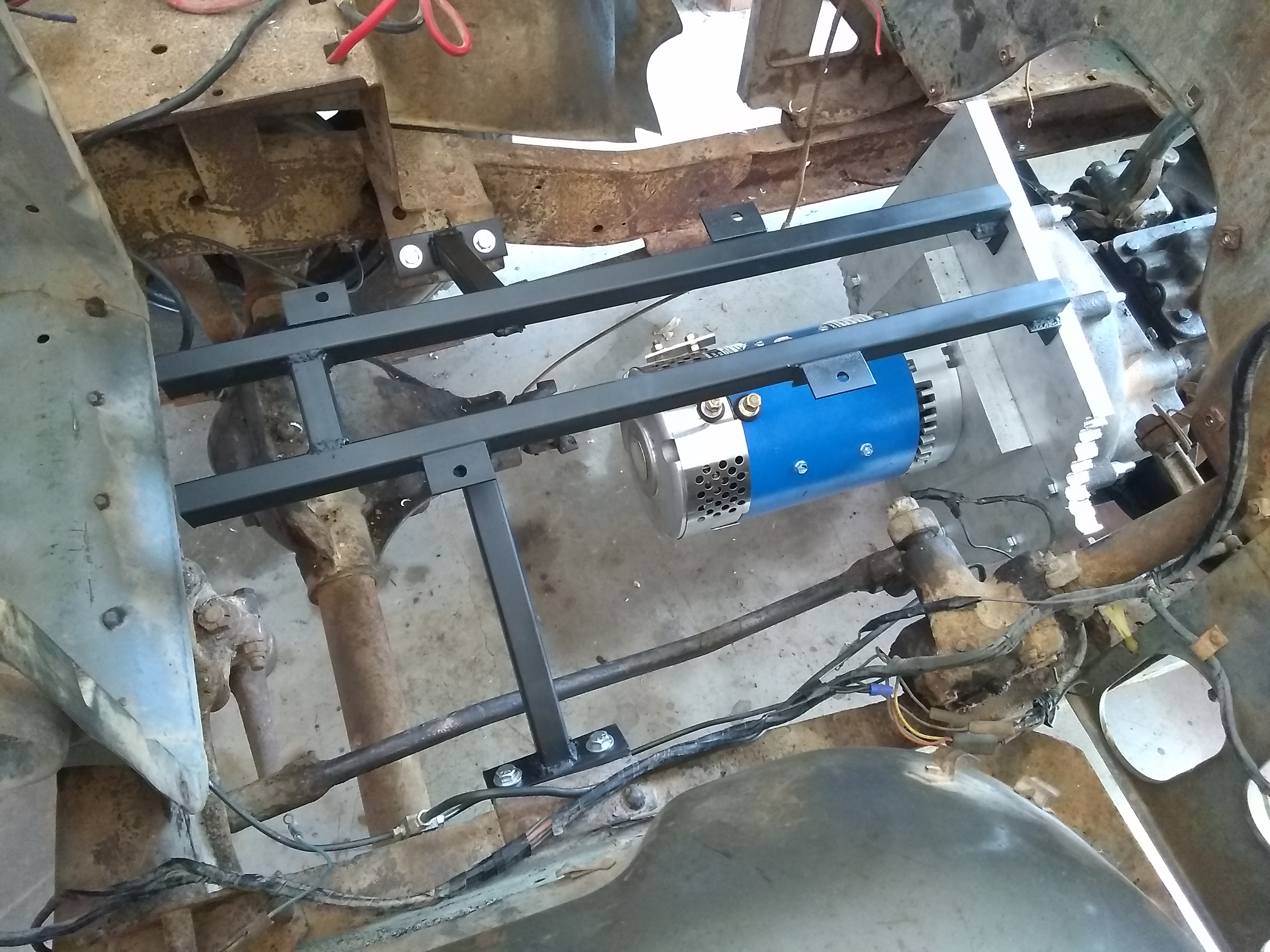
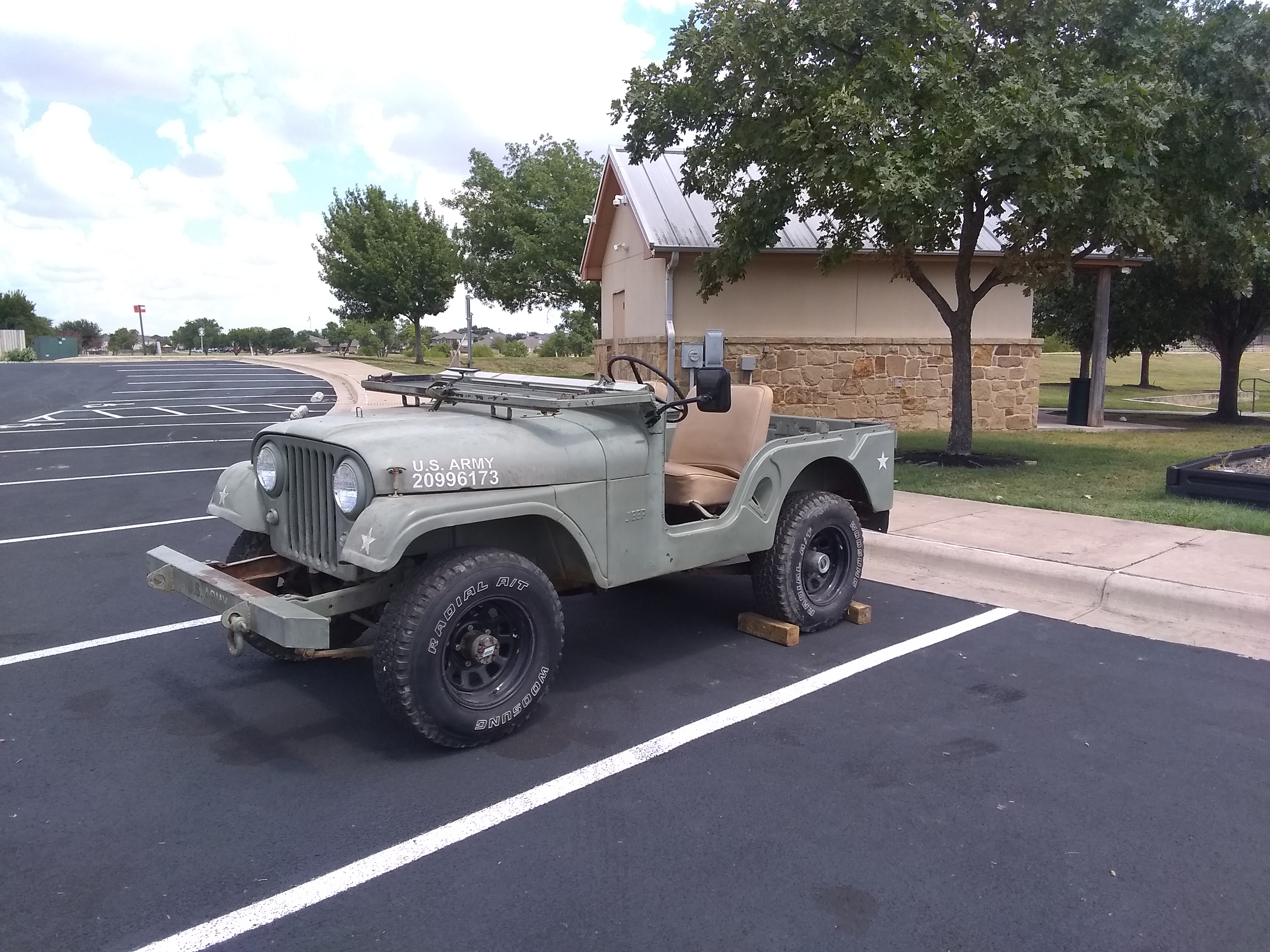
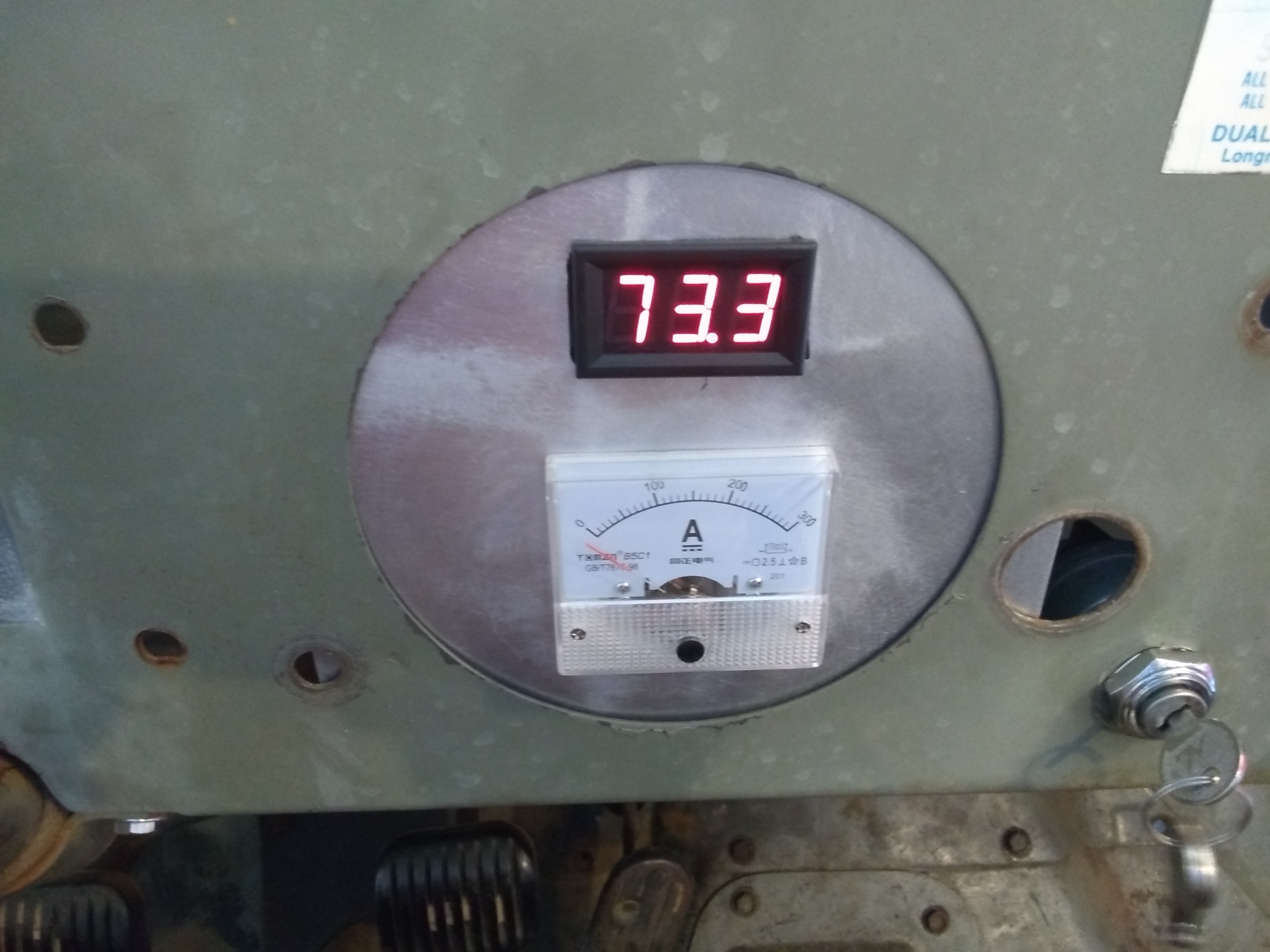
Apps and Programs
Trip Log - Using the gps inside your smartphone, the webpage logs your location, displays a real time summary of your trip and exports the results to KML for use with Google Earth or other GIS maps and apps.CO2 Calculator - This page produces CO2 estimates to 2050 for on road light and heavy duty vehicles using daily vehicle miles traveled. There are four prepared future scenarios and inputs for customization to test your own data and assumptions. Source for grams of CO2 per gallon of fuel comes from EPA tailpipe greenhouse gas emissions.
Solar System Model - This page shows a model of the solar system with elliptical orbits of all the planets and a transfer window to Mars. Use the controls at the top of the page to modify the speed, zoom, tilt, yaw, or transfer windows to Mars. All control are also tied to mouse movements or keys on the keyboard.
Left mouse button to tilt or yaw.
Scroll wheel to zoom.
Space bar to pause.
+ or - to speed up or slow down.
Q or E to speed up or slow down.
A or D to adjust yaw.
W or S to adjust tilt.
Finally, an image of the model can be exported to .png after the simulation is paused.
Organization Chart Creator - This page creates a simple organization chart. Enter the chart items, name, titles, staff members. You can import a saved csv file or export your inputs to a csv file for later. You can also export a .png of the result.
QR Code Generator - This page creates a QR Code for a webpage, email address, or contact card. Pick the type of QR Code then enter the required information. The page will generate the QR Code and you can export the code to .png for later use.